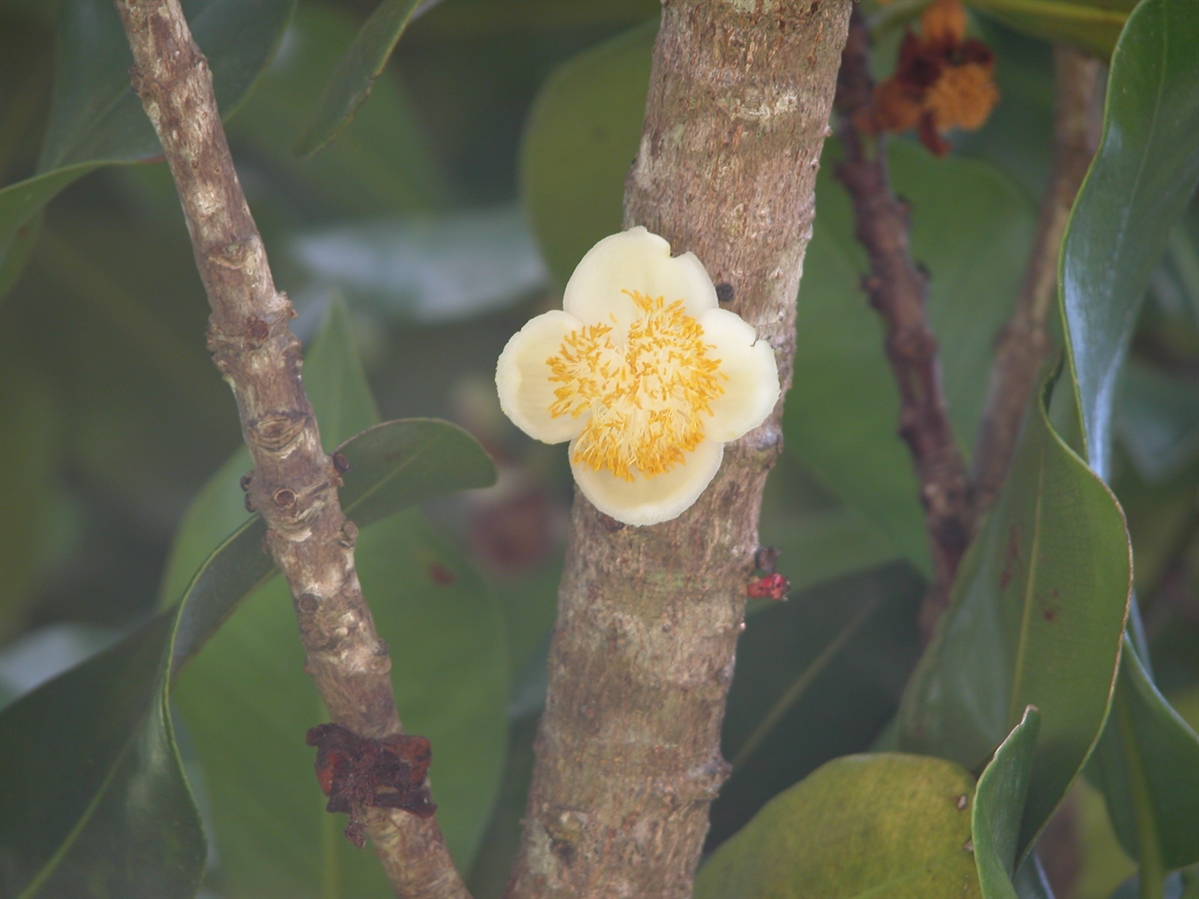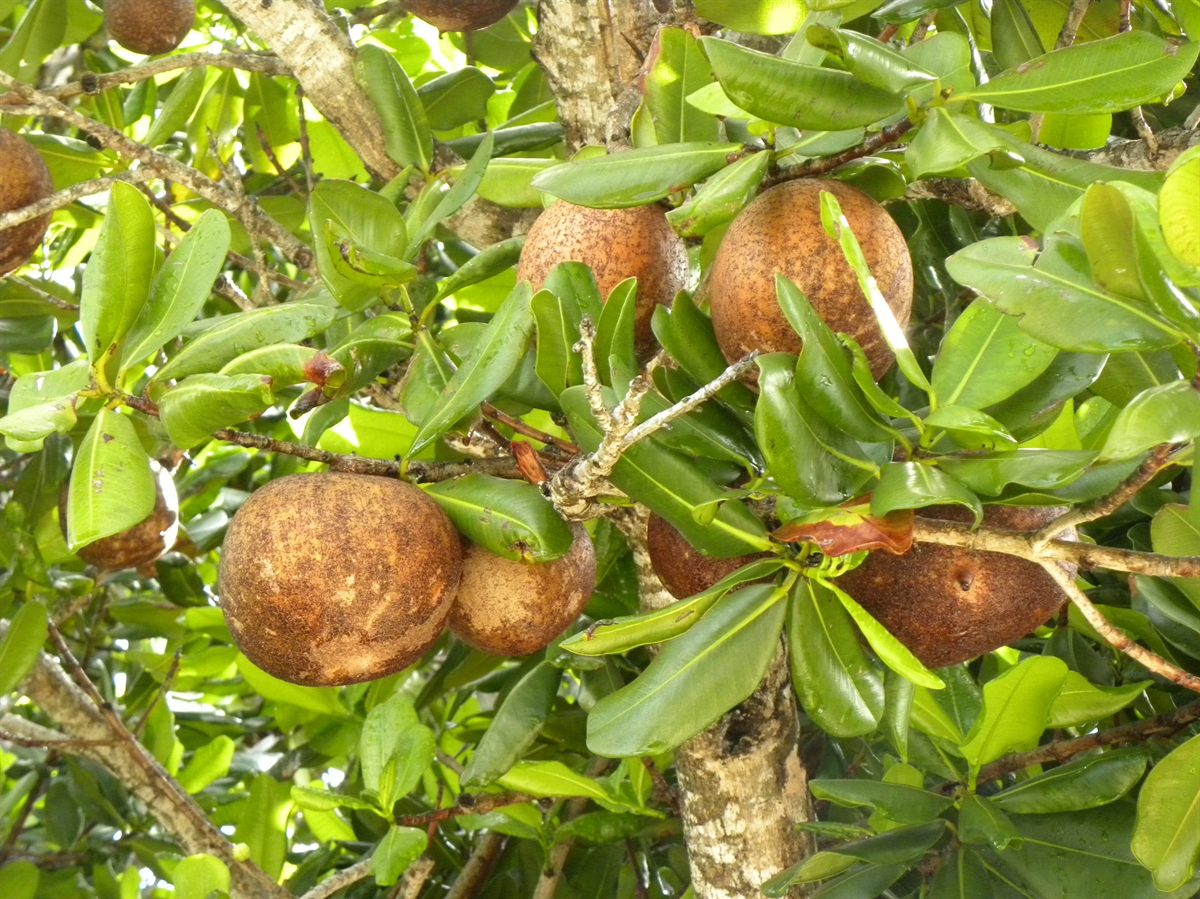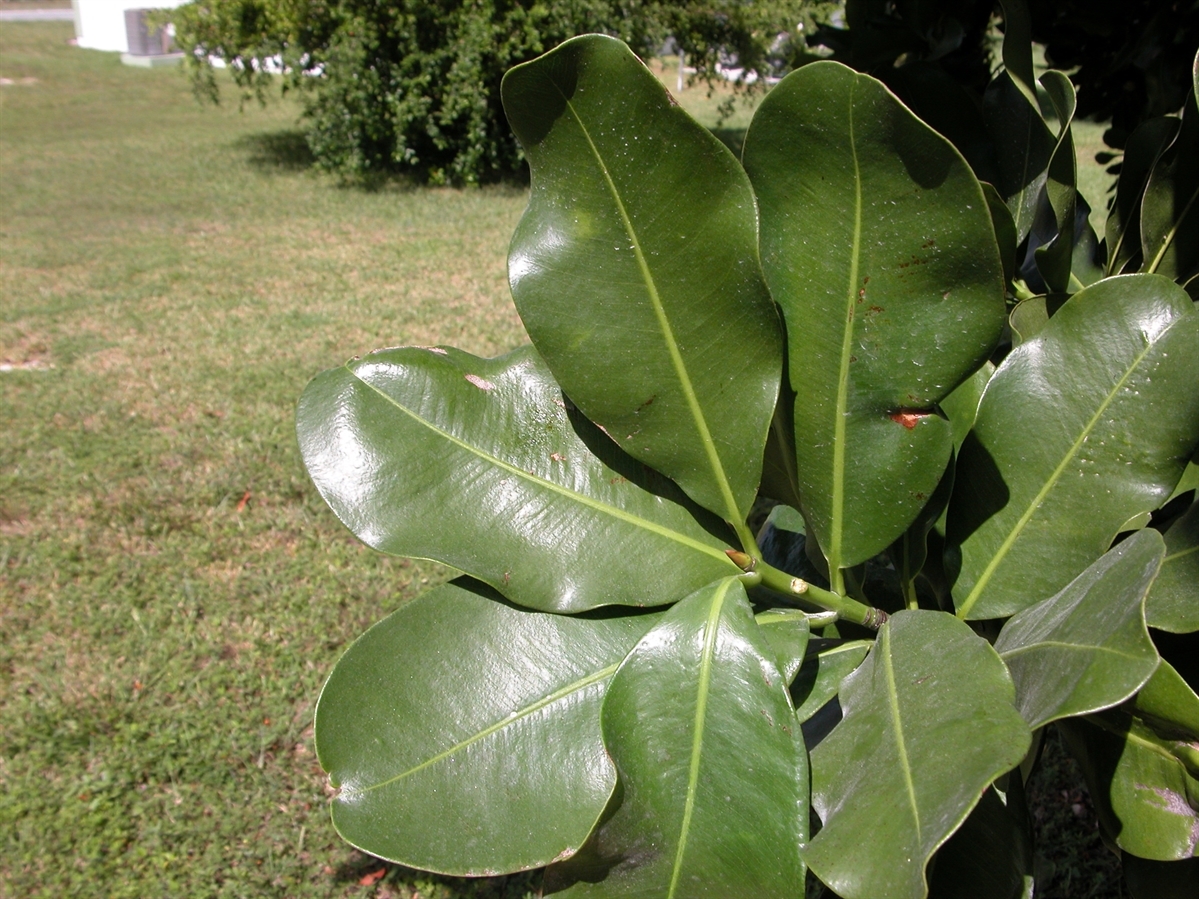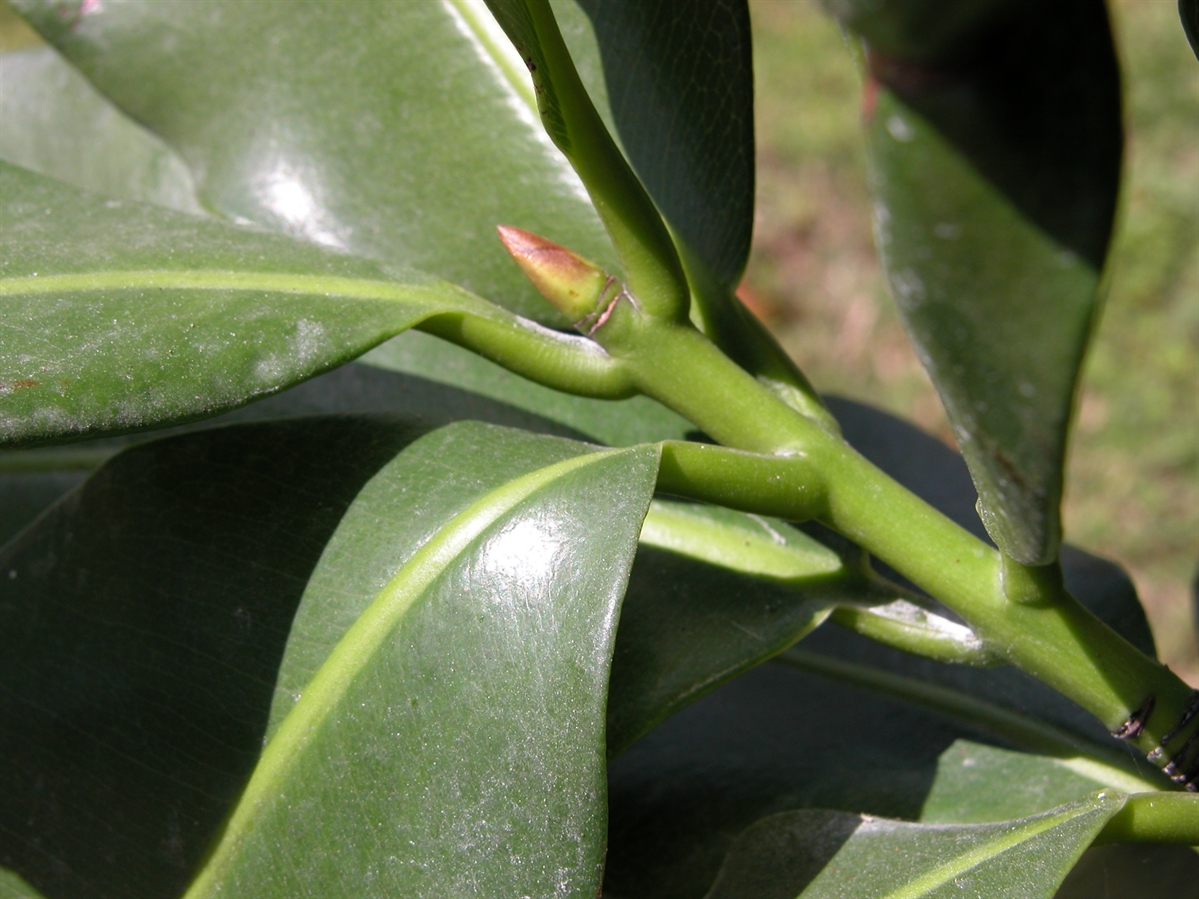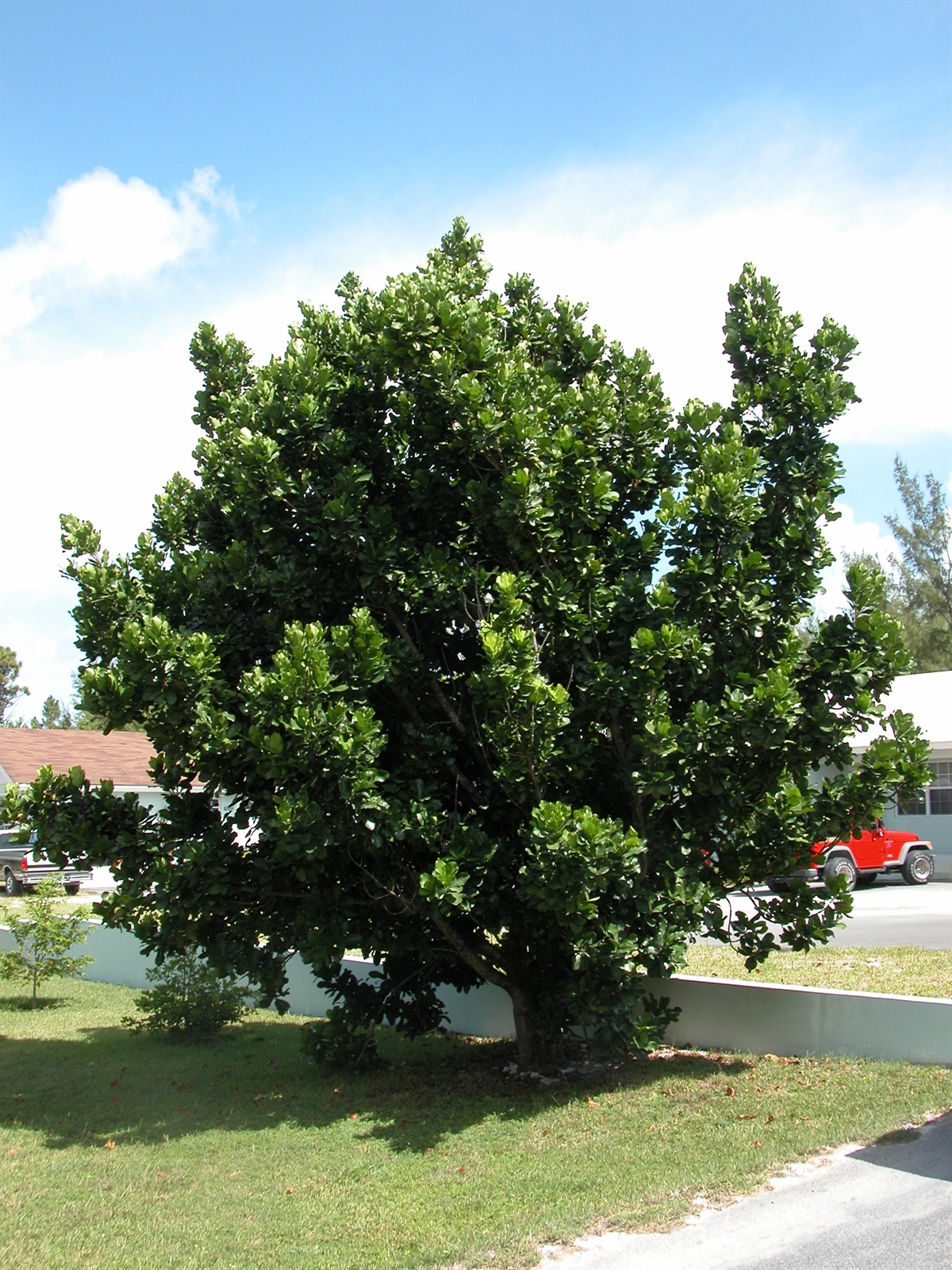Habit: Mammea americana grows as a tree to 15 m in height. The coriaceous leaves are arranged oppositely and up to 20 cm in length, elliptic to obovate, with a rounded or retuse leaf apex and an entire margin. The abaxial leaf surface has pellucid punctate dots.
Mammea americana is polygamous. The incomplete, imperfect and perfect, actinomorphic flowers are solitary, or few flowered in leaf axils. In both flowers there are 2 unfused, sepals and 4 – 6 white unfused petals. In staminate flowers there are numerous stamens and a nonfunctional carpel. In perfect flowers there are 8-10 stamens and the ovary is superior with 2 – 4 locules and ovules. The fruit is a drupe at maturity.
Habitat: Mammea americana grows in Human Altered environments (yards, gardens).
Distribution: Mammea americana is doubtful native to the Lucayan Archipelago as it is not found in natural habitats. It is grown on some of the central islands. It is considered native to the Caribbean region, Mexico and Central America. It is now grown in South America and Central Africa.
Medicinal/Cultural/Economic usage: Mammea americana is not known to be used medicinally in the Lucayan Archipelago.
The fruits are edible eaten either raw or cooked.
